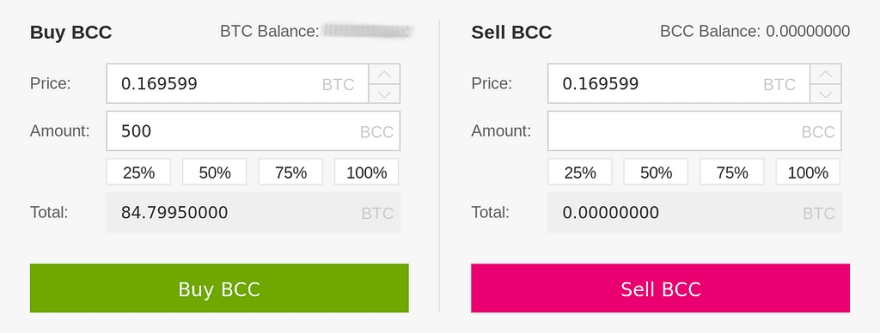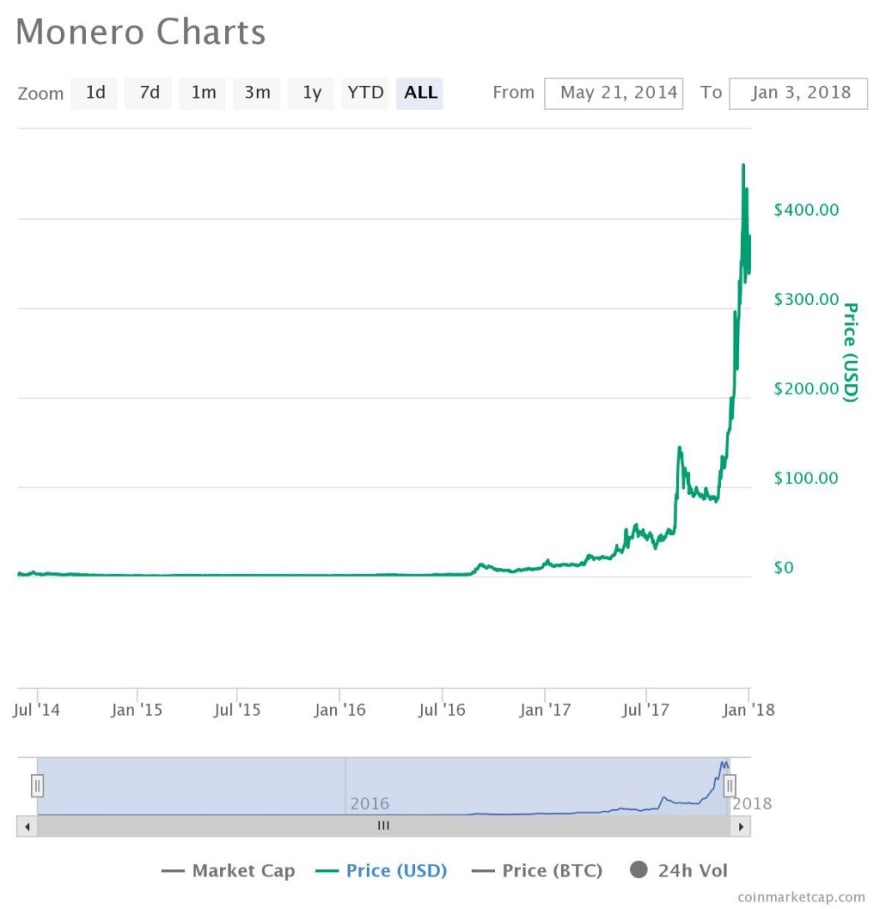By now you’ve probably heard of Bitcoin, Ethereum, and Litecoin. Those 3 coins are not the only ones out there. Outside of those 3 coins, we can call everything else Bitcoin Alternatives (alts). This guide will get you up to speed on why you should care about alts and how you can start using them.
Skip to the bottom if you’d like a tl;dr.
What are alts?
The underlying technology for all cryptocurrencies is the blockchain. If you understand linked-lists and hash tables, you’re already 90% finished with learning how blockchains work.
Alts are called Bitcoin Alternatives because the new coin improves or adds features to the original Bitcoin technology. This can be in the form of privacy, speed, or scalability. The original functionality of Bitcoin can be found in its whitepaper.
Why should I care?
Cryptocurrencies are a great place to park your investing money. Due to their volatile nature, it could be a good or bad investment depending when you enter. Take a look at how Bitcoin has grown over the years.
Alts share similar growth and depression patterns as Bitcoin. Take a look at Monero (XMR).
So if they share similar patterns why should you put money in alts? The growth deltas will never be the same. At one point BTC may increase 2% compared to an alt that increased 80%.
The difference in deltas can be attributed to real world events or tech changes (coin burns).
How do I get started?
So how do you convert your fiat to crypto? Unlike BTC, ETH, and LTC, you will find very few options for doing a direct exchange between fiat and your coin. Most exchanges that have alts allow you to trade BTC or ETH to an alt. Because of this relationship, you should be wary that if BTC’s or ETH’s value goes down, the alts may also go down.
Coinbase is a popular currency exchange. They allow you to link your bank account and exchange directly for BTC/ETH/LTC. Don’t forget to enable 2FA.
Once you’ve exchanged your fiat for BTC, you can send your BTC from the Coinbase wallet to another exchange’s wallet. The exchange I would recommend for trading with alts is Binance. Binance has over 100 alts with more being added everyday.
The first column tells you that you can buy x for y coin (x/y). We are able to exchange BTC for any of the alts.
The second columns tells you what’s the last traded price for a single alt coin. Don’t be wary of whether it’s green, red, or black since this is on a per-trade basis and not the aggregate.
The third column tells you the delta for the past 24 hours. Don’t be scared if you see all red, it could just by a correction.
The fourth and fifth tells you the high and low price for a single alt within the past 24 hours.
The last column tells you how much of the alt has been traded in the past 24 hours.
Research before you buy
As with any investment, you need to know the reasons on why you think a investment will go up. A great place to do research is on coinmarketcap which has trading hitory, news, and other functions to help you make decisions.
When you have a sound argument on why you think an alt will go up, then it’s time to buy. On Binance, you’ll simply exchange BTC for the alt.

tl;dr version
- Exchange fiat to BTC on Coinbase
- Send BTC from Coinbase to Binance
- Do alt coin research on coinmarketcap
- Buy the alt coin with BTC
- Sell the alt coin when you’ve made your profit
Glossary
Alt Coin : Bitcoin alternative, a new cryptocurrency based off of Bitcoin that has added new features
Exchange/Market: A central hub to exchange fiat to crypto, crypto to crypto, or crypto to fiat.
Wallet: Just like your physical wallet, it’s a place to store your crypto. Unlike your physical wallet that can store a variety of coins, each wallet can only store a unique coin. You’ll have a Bitcoin wallet, an Ethereum Wallet, etc.
Dump: When there is a huge influx of coins being sold. This usually causes the value to go down.
Pump: When there is a huge influx of coins being bought. This usually causes the value to go up.
Hold/Hodl: You continue to hold onto a coin despite a coin decreasing in value because you believe it will go back up.
Stop-Limit Order: These types of orders allows an event (buy/sell) to take place once a certain price has been met.
Given this stop-limit sell order: stop is set to 50, the limit is set to 55, and amount set to 2000.
When the value of the coin reaches to 50 or above, it will sell 2000 coins at 55 each.
A general rule when investing in alts is to always set a stop-limit sell order at -10% of the price you bought the coin. This can prevent you from losing large amounts while staying in a tolerable decrease range.
Special thanks to Aaroh Mankad for helping me proof my first article!






Top comments (0)